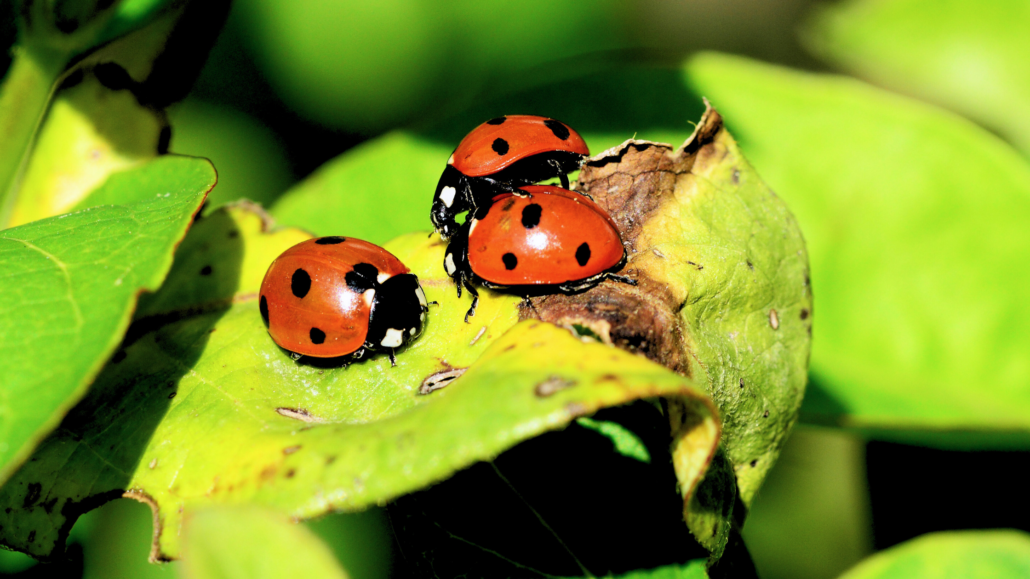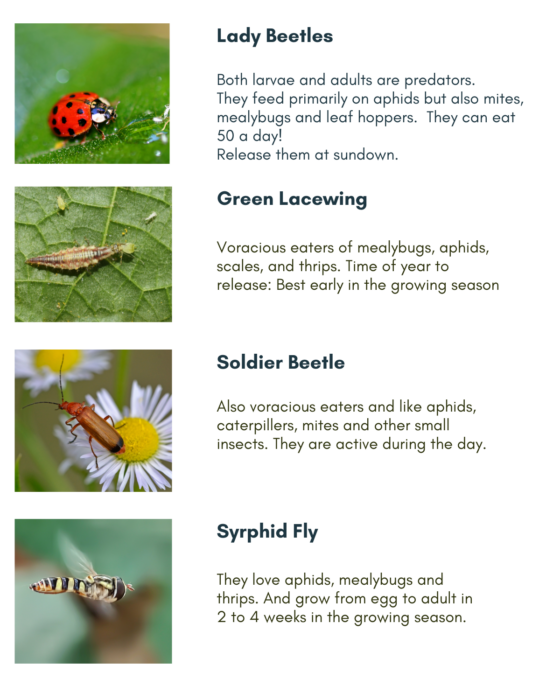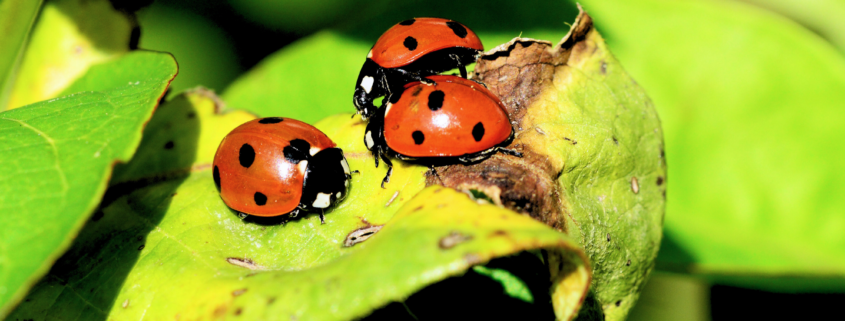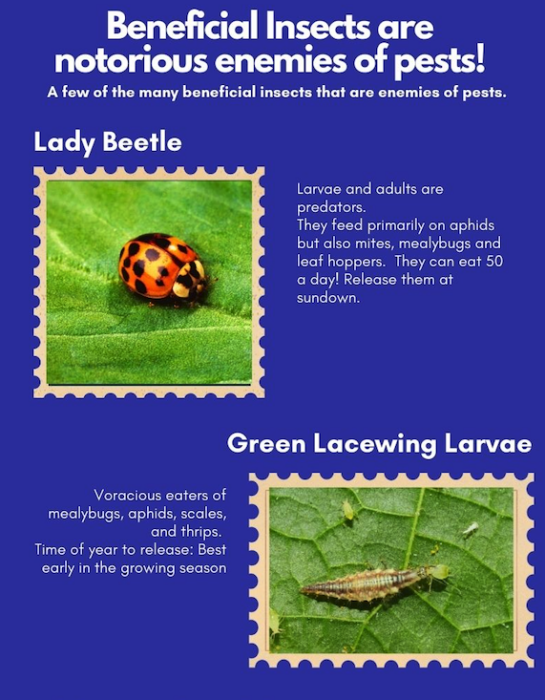How to Control Pests in the Landscape Naturally

Your landscaper spots a plant with a problem on a regular walk around the property. Its leaves are black, sooty, and sticky. Unsightly. She prescribes a strategy that includes releasing beneficial insects. It’s one of many natural tools that will help.
In the green industry, we call that problem a pest. Pests can refer to diseases, invasive plants, animals, or harmful insects. The solution is IPM or Integrated Pest Management. As more communities ban chemicals, IPM is the preferred method of managing plant pests. It is a scientific approach that favors the least toxic products.
Gardener’s Guild introduced this practice over forty years ago.
Our post spotlights one component of IPM: biological control, which involves using natural enemies of pests to control them. It is one of the many tools in an IPM professional’s toolbelt.
See our list of beneficial insects below and download the free infographic.
What is IPM?
It’s an environmentally sensitive approach to controlling pests and diseases that minimizes pesticides and instead relies on several strategies. Its success depends on frequently monitoring plants and their environment so problems are detected as early as possible.
Like healthcare for humans—it’s prevention first. The right plant in the right place, healthy soil, and efficient irrigation.
Monitoring, performed by trained staff, is essential. Pests are identified in their earliest stages. Treatments include cultural and physical methods and natural products like horticultural oils and insecticidal soaps. An IPM tech employs chemical remedies only when necessary.
We have an IPM division with on-staff experts at Gardeners’ Guild. The University of California is also a fantastic resource. It devotes many of its web pages to best practices guidelines.
What are Beneficial Insects?
Full disclosure: I was raised to believe that insects were bad. Learning that many (90 percent) were beneficial was a happy awakening. The planet loves them because they benefit the landscape by pollinating plants, improving soil, and eating pests that harm plants.
They are our heroes in the landscape and natural enemies of certain pests. This list includes spiders, green lacewings, praying mantis, assassin bugs (yup, that’s the real name!), pirate bugs, leatherwing beetles, and many more!
The process is called beneficial insect releases.
Highlighted below are 4 of the many natural enemies of pests:
4 Natural Enemies of Pests
There are a myriad of beneficial insect species used to manage plant pests. In this post, we highlight four that will eat multiple plant pests. See below and download our Beneficial Insect infographic.

How to Employ These Natural Enemies
This UC IPM article explains the science of insect releases. Several factors determine the best chance of success.
UC’s IPM Department also offers excellent guidance on attracting them into the garden. See sources below.
- Research about the pest and its natural enemies is critical.
- Clarify the beneficial insect’s (natural enemy) species and at which life stage it is most effective.
- The ideal time of year for a release is critical. It differs depending on its natural enemy. The pest must be at a vulnerable life stage. Know when that time is.
- Effectiveness will also vary depending on the pest’s infestation level and the volume of natural enemies recommended for treatment.
Closing Thoughts
Climate change requires landscape industry professionals to continuously adjust for drought, heat, fire, and even pests. Warming temperatures, drought, and atmospheric rivers are changing our ecosystems. An article by Marin Master Gardeners points out that climate change is affecting how or if pests’ natural enemies are in sync with their prey. Gardeners’ Guild IPM division is staying abreast of the latest techniques via ongoing training and then passes it on to you to help you understand it.
We welcome feedback or stories about your experiences with pests and/or their natural enemies.
Sources for more information:
UC IPM Department: What is IPM?
UCANR Natural Enemies of Pests
UC IPM Experts YouTube Video on Pests
This just in. From The California Department of Pesticide Regulation.
They report that the use of pesticides dropped by more than 5 percent from 2021 to 2022. Their Pesticide Use Report describes this news as a longer-term trend and shows how pesticide use has dropped in several categories over the last 10 years. Encouraging!





Leave a Reply
Want to join the discussion?Feel free to contribute!